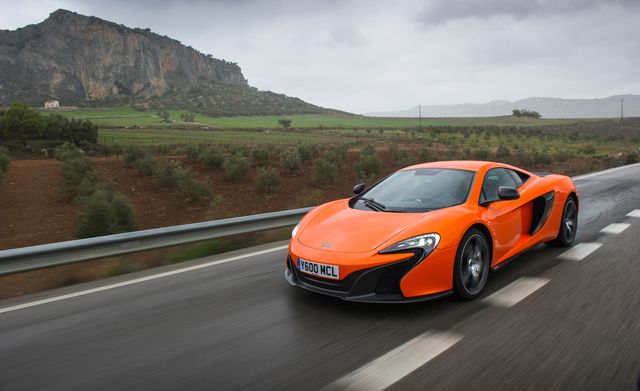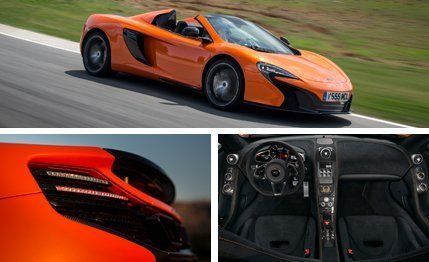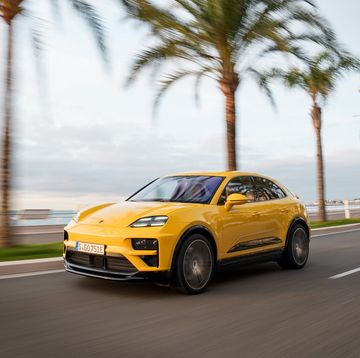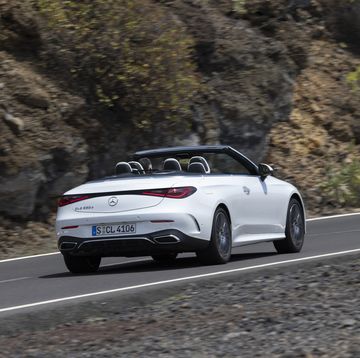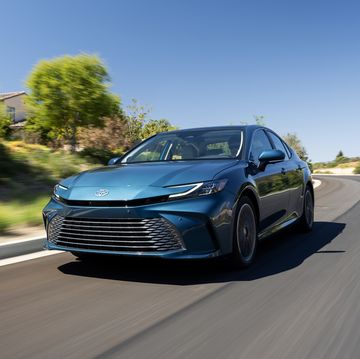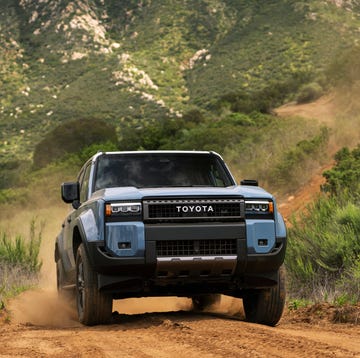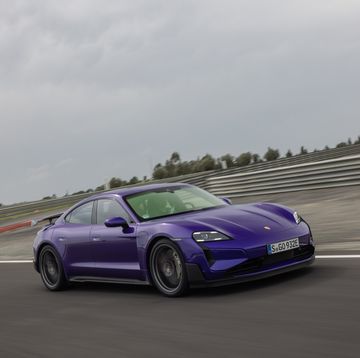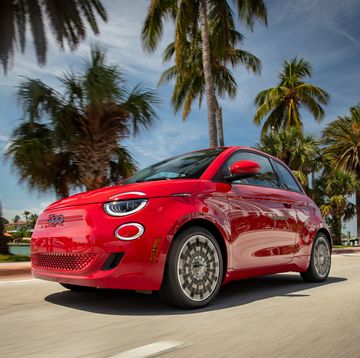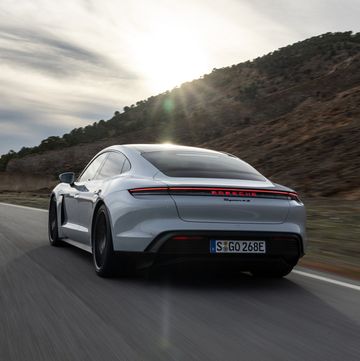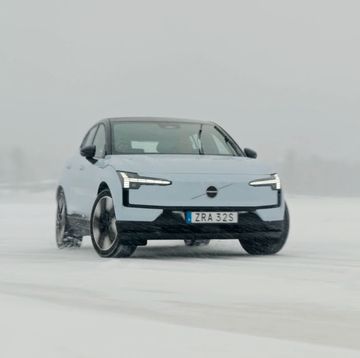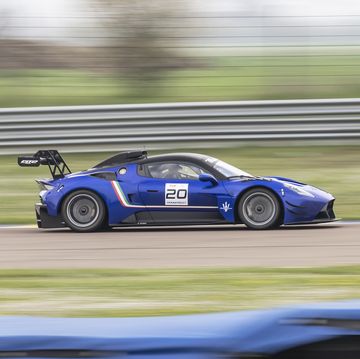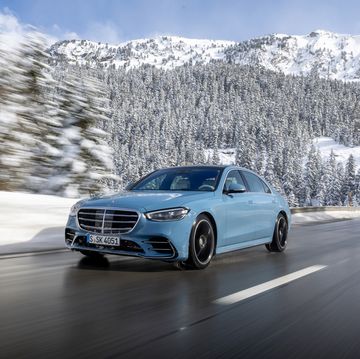Turning off the stability control in a 641-hp, rear-wheel-drive supercar with summer tires in wet, sloppy weather on a 3.4-mile, 26-turn track can be a little nerve-wracking, but that’s what is about to happen as we enter our third lap of the Ascari racetrack in southern Spain. We’re at the helm of the new McLaren 650S, and at our right is McLaren test driver Gareth Howell, who doesn’t seem to be nervous at all as he switches the Powertrain and ProActive Chassis Control (PCC) systems from their Sport to Track settings. He clearly knows something we don’t.
Here’s what he knows: Even in this foul weather, the 650S becomes more stable and more controllable the less the stability controls are activated. Why? Because you feel everything in the 650S—through the steering wheel, the seat of your pants, the firm brake pedal. Indeed, few cars communicate each individual wheel’s amount of grip with such clarity. The 650S tells you in no uncertain terms when the driver is approaching his own limits—or more accurately, when it’s approaching the driver’s limits—and the more times we lapped Ascari, the higher the limits seemed to get. The 650S is a patient teacher, always at your level, and it allows you to climb its learning curve quickly and happily.
Introduced in February prior to the Geneva auto show, the $269,200 650S coupe and the $283,925 650S spider are essentially face-lifted versions of the 12C supercar. The 12C was already good: It beat the Ferrari 458 Italia and Porsche GT2 RS in a three-way comparo shortly after its introduction in 2011. Yet in that test, as on subsequent drives, we had a few notable complaints: banal styling, a ho-hum exhaust note, and a general lack of smoothness, thanks to grabby carbon-ceramic brakes and the seven-speed dual-clutch transmission.
P1 Inspired
The 650S slots in just above the $241,900 12C and contains 25-percent-new components but doesn’t outright replace the less-expensive car. The most apparent differences are the revised styling bits. Inspired by McLaren’s spectacular $1.2 million P1 hybrid super-supercar, the 650S’s front end appears infinitely meaner than the benign 12C’s, with a sculpted front bumper and serpentine grille that features a thin band of LED-based combination headlamps evocative of McLaren’s swoosh-shaped logo. Most body panels are shared with the 12C, but plenty of new stuff is attached to them, including carbon-fiber lower door blades, gaping side scoops to feed the hungry engine, and a recalibrated dynamic rear wing that, along with the new visage, is said to contribute to a 24-percent increase in downforce at 150 mph. McLaren credits the aero-sculpted nose cone for providing better high-speed turn-in.
The 650S derives its name from the 650-PS European horsepower rating (equivalent to 641 SAE net horsepower) of its twin-turbocharged 3.8-liter V-8, up from 616 horsepower in the 12C. Torque has welled to 500 lb-ft from 443 in the 12C. The added power comes courtesy of new pistons and heads, revised cam timing, new exhaust valves, and a new exhaust system. Other changes include firming up all three PCC settings, making carbon-ceramic brakes standard, stiffening the springs 22 percent in front and 37 in back, and mounting forged 19-inch-front and 20-inch-rear wheels wrapped in Pirelli P Zero Corsa rubber.
Specifications
Eyeball-Sucking Performance
Thus equipped, we figure the 650S can hit 60 in 2.8 seconds, achieve triple digits in 5.9 seconds, and blow past the quarter-mile mark in an astonishing 10.5 seconds on its way to 207 mph. Although the weather didn’t allow us to verify those numbers with test equipment, really, the shove delivered by each jab of the throttle leaves us no reason to doubt ourselves. And the foul weather didn’t stop us from experiencing the newfound drivability of the seven-speed dual-clutch automatic, which cracks off instantaneous shifts and even slightly overlaps the clutches above 5000 rpm in Track mode as an “inertia push”—while providing everyday drivability much like a luxury car’s automatic in Normal mode.
Meanwhile, the huge carbon-ceramic brakes, supplemented by a rear spoiler that shoots upright to serve as a high-speed air brake, are powerful enough to suck your eyeballs out of their sockets and do so with a wonderfully visceral, and natural, pedal feel.
For all its intensity, the 650S is eminently comfortable on the road. The ride quality is perfectly tolerable in Normal and Sport modes, but Track mode is a bit brittle. Furthermore, McLaren maintains that the spider—with its two-piece power-retractable hardtop and 100-or-so pounds of added weight—is as stiff, grippy, and fast around the track as the coupe (in fact, the car McLaren provided for us on the track was a spider). Clearly, McLaren’s proficiency in carbon fiber pays dividends here—that, and the fact that McLaren has been building Formula 1 cars for half a century—as nary a squeak or rattle or crack or pop emanates from the windshield cowl or anywhere else when kissing Ascari’s apex curbing or encountering hard bumps in the road.
The weather didn’t allow us to put the spider’s top down—a 17-second process—until late in the day, but we did lower the retractable rear window often, opening a direct conduit to the engine’s improved exhaust note and exhilarating turbo whooshes. All our test cars featured the $6490 sport exhaust system, giving coupe and roadster models alike a sweet sound. But if loudness is your thing, there’s a strong case to be made for scraping together the extra $14,725 for the roadster.
Getting Down to Business
You don’t have to add much to the 650S’s satisfyingly minimalist interior, which remains refreshingly free of brand kitsch. It’s an intimate space with surprisingly good outward vision, much like that of the original Acura NSX. No iDrive or MMI here, just a thin center stack containing a vertically oriented touch screen and pushbuttons for the adjustable chassis and powertrain and transmission. The ceiling, the seats, and the doors are swathed in faux suede, with soft leather available as an upgrade along with vast chunks of carbon fiber that alone can add the cost of an Audi A4 to the car’s bottom line. If it were our money, we’d stick with the nappy stuff but spring for the $6940 carbon-fiber racing seats, which are wonderfully comfortable on the street and a road racer’s best friend on the track.
With its menacing looks and newfound dynamic proficiency, our remaining gripes are less significant. The doors need to be slammed hard to close, the infotainment interface is still fussy, and option pricing is obnoxious even by supercar standards. But in all honesty, if we could afford the car, we could live with those issues.
In previous coverage, we stated that the 12C elevated the supercar. With the 650S, McLaren has closed in on the top floor. And with some serious new competition in the form of the Ferrari 458 Speciale and Lamborghini Huracán, the 650S’s arrival comes not a moment too soon.

